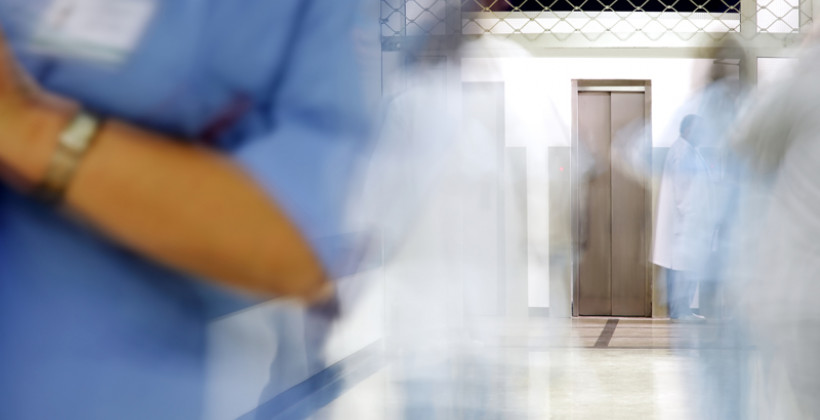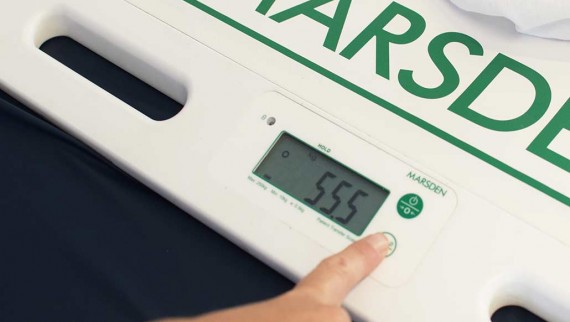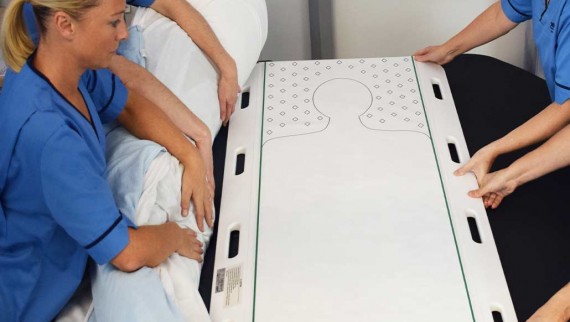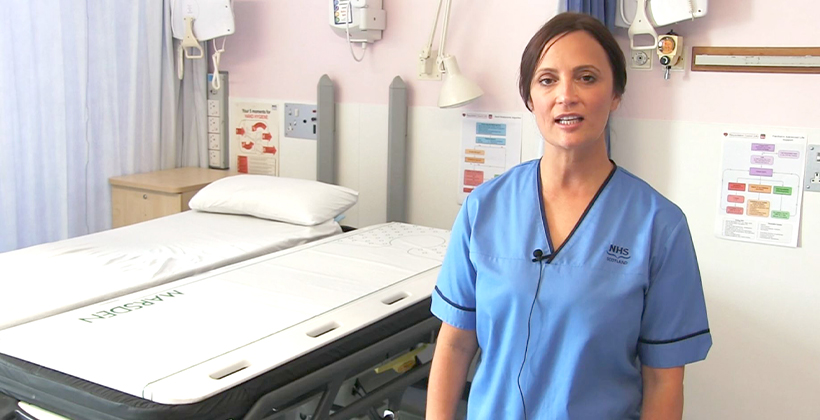Patient Transfer Scale - The development story
This page content is reproduced with express authorisation of Marsden Weighing Group UK and is subject to their copyright Copyright 2018 Marsden Weighing Group. Details reported have been provided by Marsden Weighing Group UK based on their research. At time of publishing, New Zealand based research is not yet available.
Weighing patients correctly is essential to ensuring accurate drug dosages and administering suitable treatment. But for patients requiring urgent, immediate medical attention this is not always possible.
Former NHS Lanarkshire emergency care nurse Gillian Taylor’s frustration at not being able to weigh critical patients easily, quickly and accurately manifested itself in a determination to find a solution.
Working at University Hospital Monklands near Glasgow since she was 21, Gillian had seen – and overcome – most of the challenges an NHS emergency care nurse is faced with. But it was the issue of weighing patients who were critically ill that she couldn’t resolve.

Weighing New Admissions
Newly admitted patients need to be weighed accurately and as soon as possible.
NICE guidelines (2006) state patients admitted to hospital should have “a weight on admission and then a weekly weight.”
But if a patient suffered sepsis or stroke, for example, they couldn’t simply be weighed on a conventional hospital weighing scale. The options were bed scales, or hoist scales.
Bed weighing scales were time consuming and in many cases too bulky to move around. Hoist scales could take even longer to set up. Additionally, hoist scales were far less suitable for many critical patients, and were additionally unpopular due to the indignity caused to the patient.

Accurate Weight Measurement Critical to Drug Dosage
When drug dosage is determined by weight, it's crucial to a patient's well-being that their weight is measured accurately and quickly.
In order to administer the correct drug dosages or treatment as soon as possible, gaining a patient’s weight in an emergency situation is crucial. With pressure to get that weight reading, improve patient outcomes and ensure a quick door to needle, estimations were sometimes made.
A study conducted by three teaching hospitals in West London found that as many as 46% of patients admitted to hospital did not have a weight recorded. The most frequently identified barrier to weight not being recorded was interruptions in the admission process.
Another study found that fewer than 30% of patients were even being weighed at all, despite being prescribed medication that required weight-based dosages (Hilmer et al).
Over the course of many sleepless nights, Gillian thought of what could be made available to ensure these patients were weighed accurately, easily and in such a way that did not slow down the door to needle time. It was actually a kitchen scale that provided the inspiration. “I looked at a this scale in my kitchen and thought, surely a scale can be made big enough for a patient to lay on,” says Gillian.
And then I started thinking about how we use a slide to transfer a patient from a trolley to a bed when they admitted. Could a weighing scale be incorporated into the transfer slide?
Gillian Taylor, Former NHS Lanarkshire Emergency Care Nurse, UK
This was 2008. Gillian parked the idea for a while, thinking that surely somebody, somewhere, will have had the idea of putting a weighing scale inside a transfer slide. But regular Google searches suggested otherwise. And as time went on and a suitable weighing scale never arrived, Gillian decided to do something about it.
"I remember a patient came in with injuries to his legs, and it was difficult to get on top of his pain and impossible to move him to be weighed. The same for some patients who had sepsis and required antibiotics - they need a weight quickly to ensure accurate dosages. Then latterly working in practice development for Stroke, where the ‘door to needle’ for thrombolysis is crucial, it became clear getting an accurate weight quickly can help save a life. “
Gillian began speaking to NHS Scotland about her idea, eventually working with Scottish Health Innovations Limited to create a prototype. A prototype was created in 2015 by Scottish-based product development specialists Cramasie, and it was this prototype that was presented to Marsden in 2016.

Rigorous Testing
The concept was born, but the prototype would need re-engineering to pass medical approvals for use within hospitals and care homes.
The Patient Transfer Scale – as it was known by this stage – was presented to over 30 hospitals in the UK, to gauge the reaction, get feedback and test in simulated conditions. Healthcare professionals from key areas of each hospital, plus the wider multidisciplinary team, gave their thoughts on the scale.
It became immediately obvious that the Patient Transfer Scale was the solution many more areas of the hospital were needing than I’d first envisaged. “
As well as Emergency departments where time is crucial, and stroke patients to ensure a quick door to needle time, the PTS found favour with those working in ICUs, Spinal units, Radiology departments and Care of the Elderly teams. Many hospitals envisaged at least one PTS being available on every ward.
The feedback from the focus groups in those 30+ hospitals meant there were design changes required. Additionally, Marsden’s technical team had to spend some time adjusting the layout of the scale to ensure absolute accuracy prior to the thousands of tests the scale would eventually undergo to be approved for medical use (2014/31/EU Non-Automatic Weighing Instrument Directive Class III Approved and 93/42/EEC Medical Devices Directive Approved).
Now, the PTS is available to the world, and no longer do patient weights have to be estimated. Patient weight can be recorded with the minimum of fuss, no more estimations and a clear improvement in patient care and dignity.
But the PTS’ biggest benefit is that it can be used as a transfer slide, making it part of an already-existing process and therefore adding no time and requiring no extra staff to get the weight of a patient.

Message From Gillian
"A patient's weight can be critical to delivering the right treatment at the right time. With the PTS now available, every hospital in the world can improve patient care, enhance outcomes and administer medication and treatment with confidence".